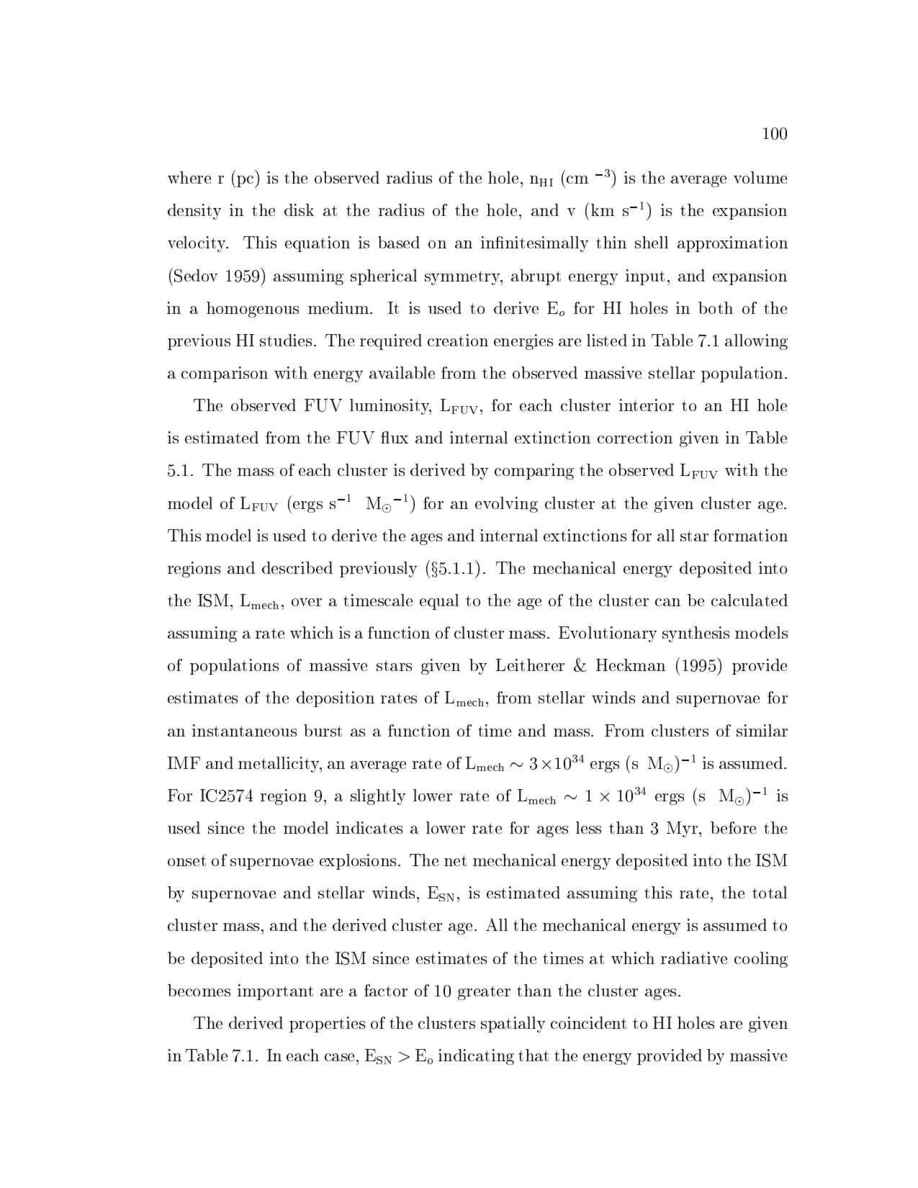
100
where r pc is the observed radius of the hole, n
HI
cm
,
3
is the average volume
density in the disk at the radius of the hole, and v km s
,
1
is the expansion
velocity. This equation is based on an in nitesimally thin shell approximation
Sedov 1959 assuming spherical symmetry, abrupt energy input, and expansion
in a homogenous medium. It is used to derive E
o
for HI holes in both of the
previous HI studies. The required creation energies are listed in Table 7.1 allowing
a comparison with energy available from the observed massive stellar population.
The observed FUV luminosity, L
FUV
, for each cluster interior to an HI hole
is estimated from the FUV ux and internal extinction correction given in Table
5.1. The mass of each cluster is derived by comparing the observed L
FUV
with the
model of L
FUV
ergs s
,
1
M
,
1
for an evolving cluster at the given cluster age.
This model is used to derive the ages and internal extinctions for all star formation
regions and described previously
x
5.1.1. The mechanical energy deposited into
the ISM, L
mech
, over a timescale equal to the age of the cluster can be calculated
assuming a rate which is a function of cluster mass. Evolutionary synthesis models
of populations of massive stars given by Leitherer & Heckman 1995 provide
estimates of the deposition rates of L
mech
, from stellar winds and supernovae for
an instantaneous burst as a function of time and mass. From clusters of similar
IMF and metallicity, an average rate of L
mech
3
10
34
ergs s M
,
1
is assumed.
For IC2574 region 9, a slightly lower rate of L
mech
1
10
34
ergs s M
,
1
is
used since the model indicates a lower rate for ages less than 3 Myr, before the
onset of supernovae explosions. The net mechanical energy deposited into the ISM
by supernovae and stellar winds, E
SN
, is estimated assuming this rate, the total
cluster mass, and the derived cluster age. All the mechanical energy is assumed to
be deposited into the ISM since estimates of the times at which radiative cooling
becomes important are a factor of 10 greater than the cluster ages.
The derived properties of the clusters spatially coincident to HI holes are given
in Table 7.1. In each case, E
SN
E
o
indicating that the energy provided by massive
